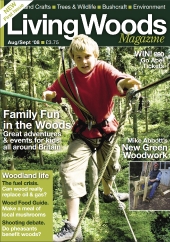posted 4 years ago
I used to work with pollinators in the PNW, and would love to share some of what I learned!
Many of the native bee species are ground-nesting, but there are a number of cavity-nesting genera (Megachile, Ceratina, and Hylaeus being among the most common). Nesting sites of cavity nesters aren't limited to twigs! I've seen Osmia nesting in the wall of a cob house in the Coast Range, and Ashmeadiella nesting in a borer-eaten wood sign in the Willamette Valley.
Megachile species are relatively large and prefer larger stems--anything with a hollow or pithy centre that is a similar internal diameter as a commercial straw. Blue elderberry, bamboo, and even old nail holes, termite galleys, and cracks in peoples' exterior walls have been used! Ceratina loves to make nests in the canes of blackberry/raspberry/thimbleberry and other smaller stems with a pithy centre. This flexibility is one of the reasons they are so abundant at roadside blackberry brambles. Hylaeus is smaller still, and I've seen them nesting in the stems of Queen Anne's lace--so if you save carrots for seed, leave the stems out and you may find that you have guests later! Hylaeus specialises on pollination of plants in the family Apiaceae (the carrot family), so this is a good strategy -- nest where the food is. I suspect that they will also nest in flowering stalks of parsley, cow parsnip, and other members of this family. These little bees have also been found nesting in reeds and rushes, and a 2019 note reports them nesting in polystyrene, so they are apparently flexible in their nesting site choices.
For solitary bees, and particularly those in the western US, there is a lack of scientific knowledge about their behaviour and life history, as there hasn't been the extended study that has gone on in Europe, and the density of universities is lower (the bulk of natural history studies are done within an hour drive of universities). A lot of the resources that are made for the public are just introducing the idea of cavity- and ground-nesting bees (not every bee is a honey bee!) and there is a lack of good, detailed information on species-specific information for gardeners and landowners. I'd recommend learning to ID bees to genus (or learning to take good photos of them), and keeping record of who's in your garden and how that changes over time so you can estimate how effective your land management strategies are in drawing in pollinator species. Most native species have a foraging range that is estimated to be within 200-500m of their nest site, and recent studies have shown that gardens have a massive effect on bee diversity in the wider landscape, so it's not only a noble goal to encourage pollinators -- but something that is achievable as an individual gardener.
He whai take kore noa anō te kupu mēnā mā nga mahi a te tangata ia e kōrero / His words are nothing if his works say otherwise



